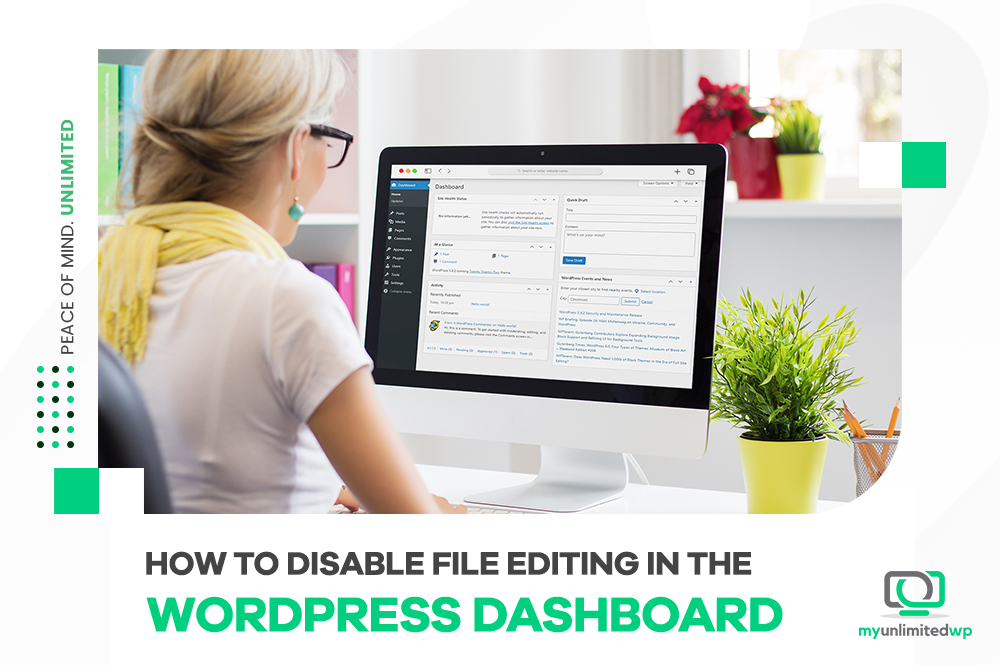Overview: If you want to disable the default WordPress theme and plugin editor, here’s a simple guide you can follow. There’s no rocket science to it — just a few simple steps and you’re good to go! Read on to learn more!
WordPress, the world’s most popular content management system, is renowned for its user-friendly interface and flexibility. However, with great power comes great responsibility. One area where WordPress offers significant control is the theme and plugin editor within the dashboard.
While this feature is convenient for making quick changes, it can also pose a security risk if not managed correctly. Disabling file editing in the WordPress dashboard is a simple yet effective way to enhance your site’s security. This blog post will guide you through the why and how of disabling file editing in WordPress.
Why Disable File Editing in WordPress?
Security Concerns
The primary reason for disabling file editing is security. If a hacker gains access to your WordPress dashboard, they can easily modify your theme or plugin files, potentially causing severe damage to your site. Disabling file editing limits the potential impact of unauthorized access.
Preventing Accidental Changes
Even experienced developers can make mistakes. An accidental modification in the theme or plugin files can break your site, leading to downtime and a potential loss of visitors and revenue. Disabling file editing helps prevent such mishaps.
Encouraging Best Practices
Disabling file editing encourages developers to use safer and more reliable methods for editing code, such as version control systems like Git. This practice enhances collaboration and ensures that changes can be tracked and reverted if necessary.
How to Disable File Editing
Disabling file editing in WordPress is a straightforward process that involves adding a single line of code to your wp-config.php file.
Here’s a step-by-step guide:
Step 1: Access Your Site’s Files
To begin, you need to access your site’s files. You can do this through an FTP client (such as FileZilla) or via your hosting provider’s file manager.
Step 2: Locate the wp-config.php File
Navigate to the root directory of your WordPress installation. This is usually the public_html or www directory. Inside this directory, you will find the wp-config.php file.
Step 3: Edit the wp-config.php File
Open the wp-config.php file in a text editor. Be careful while editing this file, as it contains critical configuration settings for your WordPress site.
Step 4: Add the Code to Disable File Editing
Scroll to the bottom of the wp-config.php file and add the following line of code:
php
Copy code
define(‘DISALLOW_FILE_EDIT’, true);
Step 5: Save and Upload the wp-config.php File
Save the changes and upload the wp-config.php file back to your server, replacing the old file.
Step 6: Verify the Changes
Log in to your WordPress dashboard and navigate to Appearance > Theme Editor or Plugins > Plugin Editor. You should see a message indicating that file editing has been disabled.
>> Related Reading: Disable File Execution in the WordPress Uploads Folder
In Summary
Disabling file editing in the WordPress dashboard is a simple yet powerful step to enhance your site’s security and stability. By adding a single line of code to your wp-config.php file, you can prevent unauthorized users from making potentially harmful changes to your site’s code.
Additionally, this practice encourages the use of more secure and professional methods for code management.
Remember, while disabling file editing is an important security measure, it should be part of a broader security strategy that includes regular updates, strong passwords, and reliable backups. By taking these steps, you can ensure that your WordPress site remains secure, stable, and successful.
So what are your thoughts? MyUnlimitedWP is here for your rescue!

